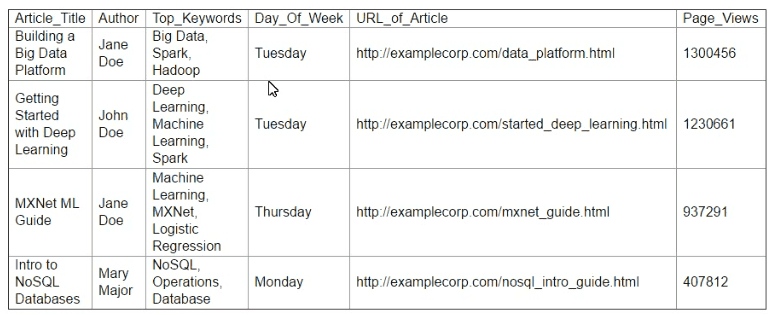Amazon Web Services MLS-C01 - AWS Certified Machine Learning - Specialty
A Data Scientist wants to gain real-time insights into a data stream of GZIP files. Which solution would allow the use of SQL to query the stream with the LEAST latency?
A Machine Learning Specialist is planning to create a long-running Amazon EMR cluster. The EMR cluster will
have 1 master node, 10 core nodes, and 20 task nodes. To save on costs, the Specialist will use Spot
Instances in the EMR cluster.
Which nodes should the Specialist launch on Spot Instances?
A company will use Amazon SageMaker to train and host a machine learning (ML) model for a marketing campaign. The majority of data is sensitive customer data. The data must be encrypted at rest. The company wants AWS to maintain the root of trust for the master keys and wants encryption key usage to be logged.
Which implementation will meet these requirements?
A Machine Learning Specialist is developing a daily ETL workflow containing multiple ETL jobs The workflow consists of the following processes
* Start the workflow as soon as data is uploaded to Amazon S3
* When all the datasets are available in Amazon S3, start an ETL job to join the uploaded datasets with multiple terabyte-sized datasets already stored in Amazon S3
* Store the results of joining datasets in Amazon S3
* If one of the jobs fails, send a notification to the Administrator
Which configuration will meet these requirements?
A machine learning (ML) specialist is training a linear regression model. The specialist notices that the model is overfitting. The specialist applies an L1 regularization parameter and runs the model again. This change results in all features having zero weights.
What should the ML specialist do to improve the model results?
An insurance company is developing a new device for vehicles that uses a camera to observe drivers' behavior and alert them when they appear distracted The company created approximately 10,000 training images in a controlled environment that a Machine Learning Specialist will use to train and evaluate machine learning models
During the model evaluation the Specialist notices that the training error rate diminishes faster as the number of epochs increases and the model is not accurately inferring on the unseen test images
Which of the following should be used to resolve this issue? (Select TWO)
A data scientist is building a linear regression model. The scientist inspects the dataset and notices that the mode of the distribution is lower than the median, and the median is lower than the mean.
Which data transformation will give the data scientist the ability to apply a linear regression model?
A real-estate company is launching a new product that predicts the prices of new houses. The historical data for the properties and prices is stored in .csv format in an Amazon S3 bucket. The data has a header, some categorical fields, and some missing values. The company’s data scientists have used Python with a common open-source library to fill the missing values with zeros. The data scientists have dropped all of the categorical fields and have trained a model by using the open-source linear regression algorithm with the default parameters.
The accuracy of the predictions with the current model is below 50%. The company wants to improve the model performance and launch the new product as soon as possible.
Which solution will meet these requirements with the LEAST operational overhead?
A data scientist for a medical diagnostic testing company has developed a machine learning (ML) model to identify patients who have a specific disease. The dataset that the scientist used to train the model is imbalanced. The dataset contains a large number of healthy patients and only a small number of patients who have the disease. The model should consider that patients who are incorrectly identified as positive for the disease will increase costs for the company.
Which metric will MOST accurately evaluate the performance of this model?
A Machine Learning Specialist is working with a media company to perform classification on popular articles from the company's website. The company is using random forests to classify how popular an article will be before it is published A sample of the data being used is below.
Given the dataset, the Specialist wants to convert the Day-Of_Week column to binary values.
What technique should be used to convert this column to binary values.




